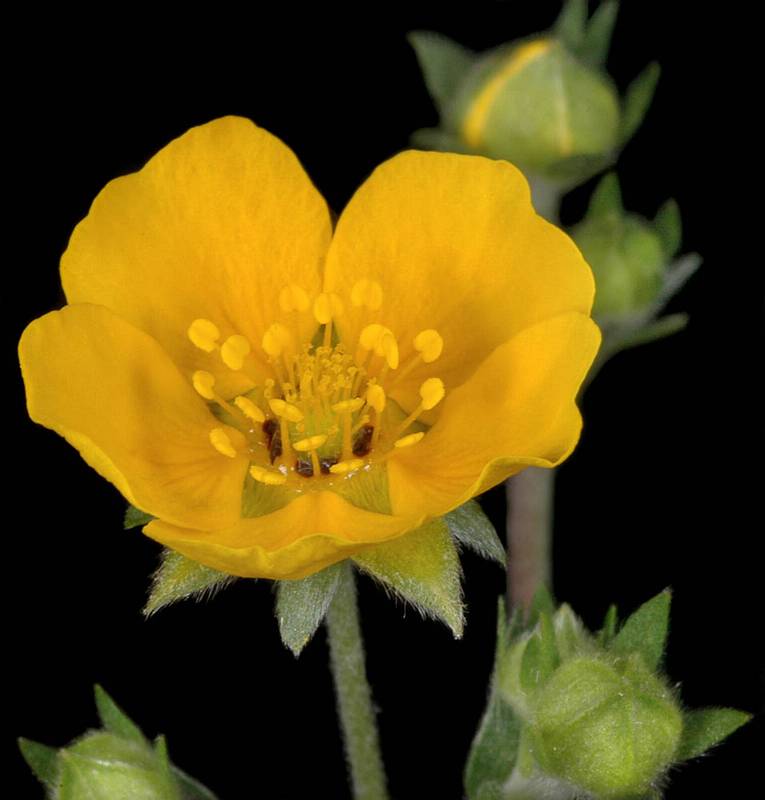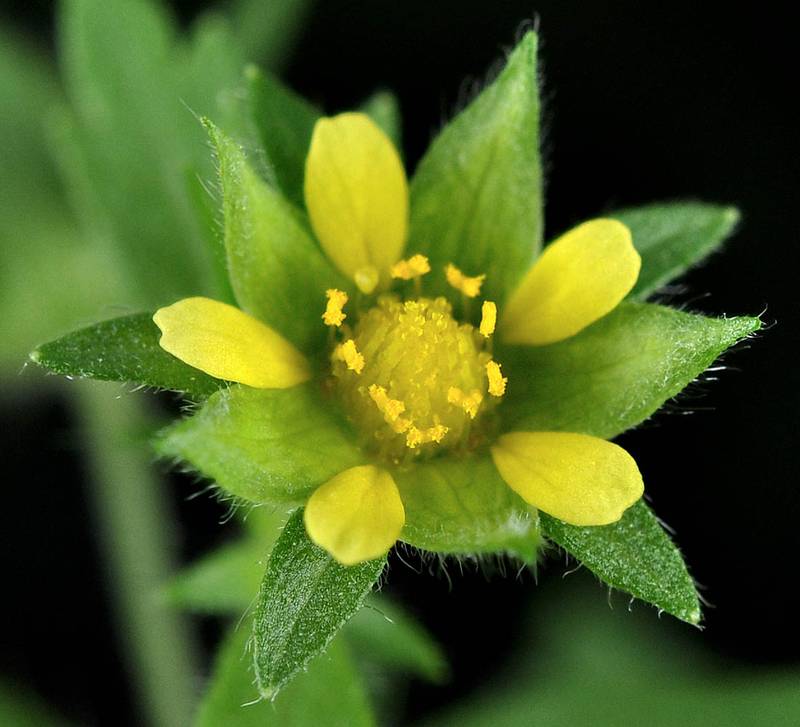Potentilla breweri
Potentilla rivalis
Brewer's cinquefoil
brook cinquefoil, river cinquefoil
Basal leaves pinnate, the leaflets 9-11, crowded, broadly obovate with a wedge-shaped base, 1-2 cm. long, cleft more that halfway to the midvein into linear divisions;
stipules ovate, 0.5-1.5 cm. long;
cauline leaves 2-3, greatly reduced.
Basal and lower cauline leaves mostly crowded-pinnate with 5 leaflets, the leaflets oblong-oblanceolate, coarsely serrate; upper leaves trifoliate, the leaflets narrower.
Inflorescence an open, several-flowered cyme;
calyx sericeous, cup-shaped, up to 1.5 cm. broad in fruit, the 5 lobes lanceolate, interspersed with 5 linear, smaller bracteoles;
petals 5, yellow, obcordate, exceeding the sepals;
stamens 20;
pistils numerous;
style slender, sub-apical.
Inflorescence leafy-bracteate, many-flowered, diffuse, long-pedunculate;
calyx cup-shaped, 5-10 mm. broad at flowering, enlarging in fruit, the 5 lobes ovate-triangular, erect, longer than the tubular portion but shorter than the 5 elliptic-lanceolate bracteoles; petals 5, yellow, broadly oblanceolate, rounded, half as long as the sepals;
stamens mostly 10, sometimes 15;
pistils numerous;
styles apical, thickened at the base.
Achene smooth, greenish, 1.3 mm. long.
Achenes yellow, ovoid-reniform, 0.8 mm. long.
Potentilla breweri
Potentilla rivalis
- Local floras:
CA,
OR,
WA
- Local Web sites:
CalFlora,
CalPhotos,
Flora NW,
PNW Herbaria
WildflowerSearch
iNaturalist (observations)
USDA Plants Database
- LBJ Wildflower Center
- SEINet
- Plants of the World Online
- Encyclopedia of Life
- Wikipedia
- Google Image Search
- Local floras:
BC,
CA,
OR,
WA
- Local Web sites:
CalFlora,
CalPhotos,
Flora NW,
PNW Herbaria,
Turner Photog.
WildflowerSearch
iNaturalist (observations)
USDA Plants Database
- LBJ Wildflower Center
- SEINet
- Plants of the World Online
- Encyclopedia of Life
- Wikipedia
- Google Image Search



